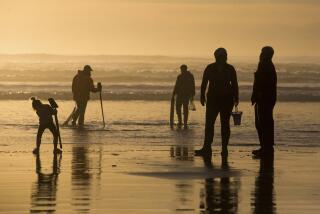Clubbings at Salmon Hatchery Set
PORTLAND, Ore. — Oregon hatchery workers will use clubs and electricity to kill thousands of surplus salmon this fall to avert a deluge of hatchery fish that would weaken the dwindling gene pool of wild coho.
Earlier this year, state officials said they would use overdoses of carbon dioxide to kill off extra hatchery fish, but changed their minds after discovering the gas didn’t kill fish quickly.
“Clubbing is by far the most effective and most humane method of killing fish,” said Steve Williams of the Oregon Department of Fish and Wildlife’s fish division.
Home videos of state hatchery workers clubbing salmon in 1999 at the Fall Creek Hatchery near Alsea spawned lawsuits and criticism that still reverberated in the state capital this spring.
Gov. John Kitzhaber vetoed a bill that would have placed a moratorium on destroying hatchery salmon, and a state judge upheld the department’s right to club fish.
“We’ve been clubbing fish at hatcheries forever,” said Steve Sanders, a lawyer in the Oregon attorney general’s office who works on fish issues for the government. “What do they think, that we can just let the [hatchery-bred] fish swim free in the wild? No way.”
Hoping to avoid a public relations nightmare this fall, the fish and wildlife department will donate more than 100,000 hatchery coho to food banks, sell some lesser-quality salmon for pet food and spread other carcasses in spawning streams to decay naturally and fertilize the organic food chain.
Williams said that hatchery workers will use carbon dioxide to temporarily immobilize the fish, then will kill them with sharp club blows to the head.
Bonneville, the state’s largest hatchery, is using electrocution to kill hatchery fish.
More to Read
Sign up for Essential California
The most important California stories and recommendations in your inbox every morning.
You may occasionally receive promotional content from the Los Angeles Times.










